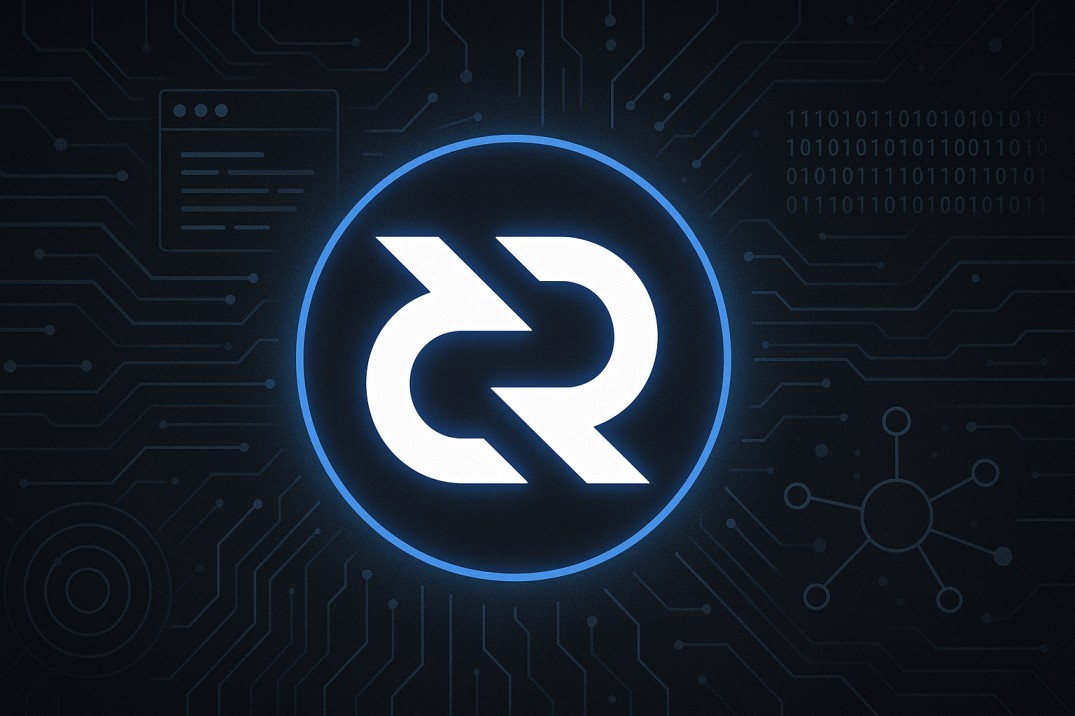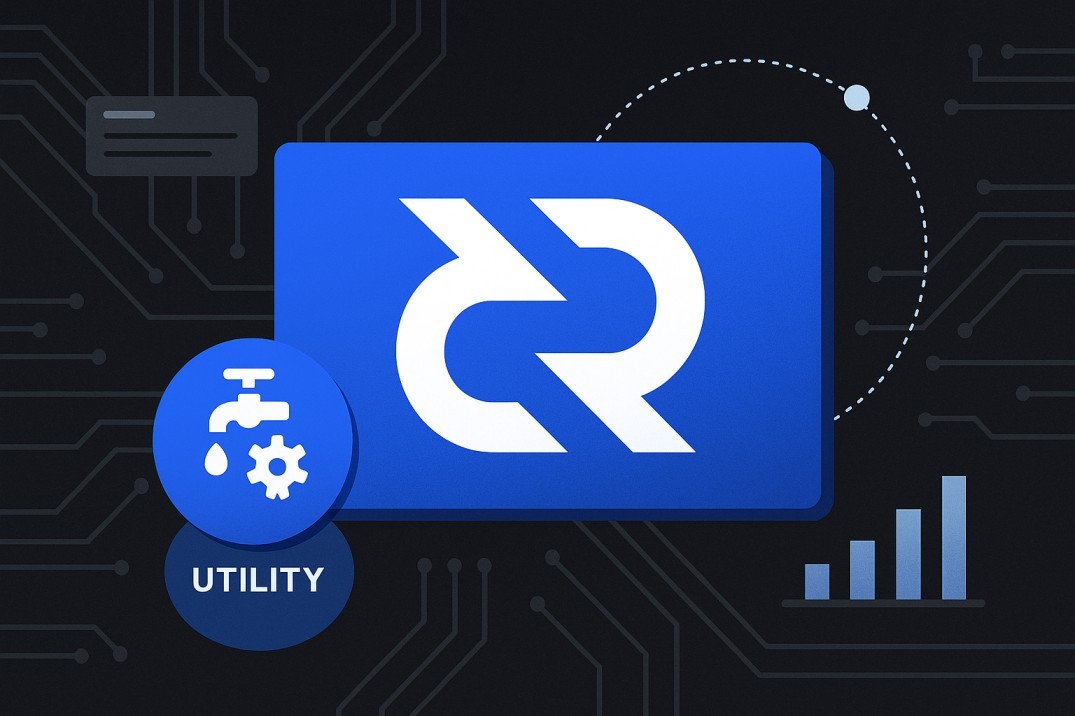TL;DR
- Decred is a hybrid blockchain combining Proof of Work and Proof of Stake to give both miners and holders a say in governance.
- Built-in governance means community members vote directly on upgrades, without relying on outside developers or companies.
- Self-funding treasury ensures the project doesn’t rely on outside investors
- DCR holders stake tokens to vote on proposals and earn rewards, this creates a strong incentive to participate and keep the network aligned.
- Privacy and decentralization are core to Decred’s design, with features like DCRDEX (a non-custodial exchange) and private transactions.
Decred (pronounced "dee‑cred") is a purpose‑built blockchain and cryptocurrency that launched in early 2016 by the team at Company 0. Its design centers on stakeholder control of decisions, transparent funding, and a hybrid consensus mechanism. Every unit, called a decred (DCR), gives its holder voting power when staked-making users part of the project's governance, not passive observers.
Decred's architecture attempts to correct key structural issues in Bitcoin and other Proof-of-Work systems-such as developer control, miner dominance, and lack of formal funding-by embedding governance directly into the protocol. As one early backer famously said:
Placeholder Ventures' Chris Burniske and Joel Monégro summed it up neatly:
This ethos-empowering the community while sustaining development through on‑chain mechanisms-is the guiding principle behind Decred.
Hybrid Consensus and How It Operates

Decred combines Proof‑of‑Work (PoW) and Proof‑of‑Stake (PoS) in sequence. Miners produce blocks via PoW and stakeholders validate them via PoS, creating a two-tiered system. That approach ensures blocks are not only mined efficiently, but also confirmed under stake-backed scrutiny.
The Voting Process
Each block triggers an on-chain vote: five randomly selected "tickets" are chosen from the pool of staked coins. If at least three vote yes, the block passes; if not, it's discarded, the PoW miner earns nothing, but ticket holders still receive their share. That pattern-of locking coins, drawing random votes, and limiting miner control-enforces balanced decision-making.
Reward Allocation
While early protocol versions started with a 60/30/10 distribution (PoW/PoS/Treasury), a governance vote in December 2021 changed the split to 1% PoW, 89% PoS, 10% Treasury. This shift reflects a deliberate move to empower stakeholders and limit mining dominance.
Consensus Rule Changes
Any upgrade to Decred's consensus rules must secure at least 75% support from voters over four weeks, and 95% of miners must be running the new code. Once passed, a one-month activation period ensures network-wide coordination. This structured process avoids accidental forks and ensures changes happen democratically.
Why This Matters
Because voters have real financial stake-coins locked in tickets-each decision aligns with long-term interest in DCR's value. As explained in a Medium piece: stakeholders vote responsibly because they have skin in the game, making the process more robust than miner-only systems.
Tokenomics and Funding Model
Supply Parameters
Decred has a capped supply of roughly 21 million DCR, with new coins issued gradually rather than halving bursts. Block rewards decrease approximately 1% every 21 days, creating a smooth emission curve. A premine of around 1.68 million DCR supported early development and outreach.
Split Incentives
- PoW miners secure transactions but earn only ~1%.
- Stakeholders (via tickets) earn 89% of rewards and confirm miner work.
- Treasury receives 10% to fund everything from code to grants. Funding cycles are controlled by community votes via Politeia-a transparent system that determines how treasury resources are deployed.
That ensures long-term sustainability without external investment influence.
Governance in Action
Decred's governance framework is more than a platform-it's its protocol. Stakeholders use Politeia, the off-chain proposal system, to propose, discuss, and vote on development tasks, community initiatives, or constitutional updates. Every decision has to be backed by PoS tickets. As Decred's documentation puts it: voters decide on consensus rules, validate miner work, manage treasury decisions, and even amend the Decred Constitution.
Many in the community highlight how governance decisions follow collective reasoning rather than individual fiat. That avoids "mob" decision-making; each ticket-holder votes independently, guided by economic interest.
Real-World Constraints
- Adoption gap: While staking works, there's little real-world utility-few merchants accept DCR directly. Broader use cases like payments or merchant tooling remain scarce.
- Governance concentration: Large early holders and core devs may still dominate votes. Stake distribution is hard to audit, raising concerns of plutocracy rather than democracy.
- Staking complexity: Ticket price rises have put staking out of reach for casual holders. Some potential participants give up when they can't stake partial or fractional amounts.
These lived experiences suggest that while governance is powerful on paper, execution depends on accessible tools, ongoing participation, and outreach.
Strengths That Stand Out

- Self‑funded governance: Every block helps fund development via the treasury.
- Stakeholder-based upgrades: Protocol evolves through ticket-holder votes, not unilateral developer decisions.
- Fork resistance: A chain fork without majority stakeholder approval is prohibitively expensive.
- Security balance: Hybrid consensus guards against both mining and stake-based takeover.
- Transparency: Politeia logs can't be erased; proposals and votes are public, traceable, and auditable.
Challenges to Overcome
Access and Complexity
Staking involves buying a full ticket, managing a wallet, and keeping it online. That's a steep learning curve. Many users quit before completing the setup.
Liquidity and Market Presence
DCR remains lightly traded, with low exchange volume and limited fiat pairings. That hampers both price discovery and retail interest. Markets still consider it a niche token.
Governance Centralization
Data suggests early adopters and core team members control millions of coins-raising risk that governance decisions may reflect the views of a few rather than the many. Ticket holders worry this may nullify the "one‑ticket one‑vote" ideal.
Treasury Transparency
While peer-driven, some critics feel treasury decisions lack full clarity and record-keeping. That might deter new participants wary of opaque financial flows.
Community Fatigue
Vote fatigue sets in as proposals accumulate. Without clear vetting or simplified processes, stakeholders may disengage-or cast votes without due diligence. That undermines the governance quality.
Use Cases, Tools, and Ecosystem
- Staking income: Hold DCR, lock coins, earn PoS rewards while voting.
- Politeia proposals: Shape development, events, grants, upgrades.
- Privacy tools: CoinShuffle++ allows optional mixing; atomic swaps let users exchange DCR and Bitcoin without a third party.
- Lightning & DEX: Decred added Lightning Network support and built its own decentralized exchange. Users can trade on-chain or off-chain.
Expanding utility-especially merchant tools or payment apps-is a frequent ask from the community to move the project beyond a governance thought experiment.
Roadmap and Recent Milestones
2018-2019: Politeia launch, Lightning support, atomic swaps, mixer tools, and SPV wallet support unfolded gradually.
2021 reward shift: Community voted to move to the current 1/89/10 reward structure.
2022-2024: Multiple privacy upgrades activated; staking tools improved; dev grants funded via treasury. Some mining reforms (GPU-focus) limited ASIC domination.
Long‑Term Outlook
Decred aims to be a durable, stakeholder‑led blockchain, where users vote to govern, fund, and evolve the system. Its capped supply and slow, predictable emission mirror Bitcoin's philosophy-but wrapped in a model that funds itself and avoids governance turmoil.
Yet success hinges on solving adoption gaps, making staking accessible, improving liquidity, refining treasury transparency, and engaging holders actively. If the community responds, ticket holders stay engaged, and proposals remain high quality, Decred shows how chain-level democracy can function sustainably.
In Closing
Decred is built for holders who want more than passive ownership. Staking comes not just with rewards, but with responsibility. Protocol updates, treasury spending, and even core financial mechanics depend on informed votes from people who hold DCR.
Still, real-world friction-technical complexity, governance concentration, low liquidity-pushes the community to refine systems, educate newcomers, and expand real use. Whether Decred fulfills its promise depends on active user involvement and continuous adaptation.











